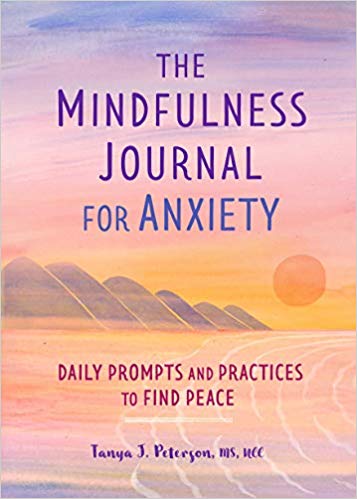
If you’re familiar at all with meditation, you’ve likely heard about mindfulness. In fact, if you check just about any social media platform right now, there’s surely someone raving about “being more present.”
Although the two terms are often used interchangeably, there is a distinction between meditation and mindfulness.
What Is Mindfulness?
Mindfulness is actually a type of meditation that can be practiced just about anywhere. Although there are dozens of ways to meditate (including tantra, zazen, and transcendental meditation), mindfulness is the method which probably aligns most closely with our modern understanding of meditation.
The Origins of Mindfulness
Although meditation is an ancient practice, mindfulness was only recently popularized in 1979 with Jon Kabat-Zinn’s creation of an eight-week program called “Mindfulness-Based Stress Reduction.” Today this is still the main program used to help those suffering from stress and anxiety.
Kabat-Zinn defines mindfulness as “paying attention in a particular way: on purpose, in the present moment, and nonjudgmentally.”
While this sounds simple enough, it’s something too few of us really know how to do—but should. Reduced stress isn’t the only benefit of a mindfulness practice—there are more benefits of mindfulness, too, including improved overall health.
How to Practice Mindfulness
Luckily, with a little effort, you can start incorporating mindfulness into your everyday routine. It’s a generally flexible form of meditation that can be practiced using one of two different methods.
Mindfulness Method 1: Intentional Breathing Techniques
The first method involves staying mindful of your breathing. Here’s how you can get started:
1. Find a comfortable seat. Make sure you can relax undisturbed for the duration of your session. Try to keep a straight back.
2. Establish a time limit. Committing to a shorter session (even 5-10 minutes) can prove helpful for beginners.
3. Observe your body. Take note of everything you’re feeling, whether it’s your stomach growling or your heels resting on the ground.
4. Observe your breathing. This is where mindfulness really comes into play for this exercise. Try to focus solely on the sensations of your breath as it enters your nostrils, travels to your lungs, and fills your stomach. Then concentrate on the sensations you feel as it exits.
5. Take note of whatever thoughts arise. Your mind will try to wander—you’ll catch yourself thinking about what you want to eat for dinner, or about that big presentation next week. And that’s okay! When you catch this happening, just gently pull your attention back to your breathing.
Don’t worry if you get distracted—turning your thoughts back to your breathing is like strength training for your brain. Over time you will see improvement and everything will come more easily.
Mindfulness Method 2: Be Present Wherever You Are
The second method can be considered more of a freestyle exercise. You can find opportunities to practice this one almost anywhere.
While the first method requires you to be mindful of your breathing, the second method allows you to exercise mindfulness in just about any task.
For example, if there is a sport you really enjoy, try to focus all of your attention and energy on playing your best game. If it’s tennis, focus on the ball and your strategy for winning that game.
Just like in the breathing activity, thoughts will appear and try to distract you. Simply acknowledge them and let them go, turning your attention back to whatever you need to focus on.
Let’s look at another example.
Maybe you have a romantic dinner planned with your significant other. Try to focus all of your attention on them, being mindful of what they are saying and doing. If thoughts about work arise, recognize them but let them go.
Thinking about the office in this moment is futile—there is nothing you can do about work, and those thoughts serve only to divide your attention.
Being as present as you possibly can for the person in front of you will make your relationship stronger. An added benefit: If things are going well at home, you’ll likely perform better when you actually are at work.
5 Life-Changing Benefits of Mindfulness
By learning to be mindful, you can unlock some life-changing benefits:
1. Improve Your Personal Relationships and Productivity
If you return home from a long day of work but your mind is still at the office, your communication and interaction with your family will suffer.
Likewise, if you arrive to work but are still thinking about family troubles, your productivity will certainly take a hit.
Being more present in every setting allows you to focus on who you are with and what you are doing so that you can apply yourself 100%.
2. Handle Stress Better
Focusing on the present moment will ultimately teach you to accept stressful situations instead of avoiding them. Once you learn to stay calm and not sweat the small stuff of yesterday or tomorrow, you’ll feel more confident in your ability to handle stress when it does arrive.
Think of how much more you can accomplish if you aren’t constantly running from situations that seem so much scarier than they actually are!
3. Improve Your Health
By focusing on the present and not allowing yourself to waste time worrying about the past or the future, your stress levels will naturally decline.
Stress doesn’t just put you in a bad mood and wreck your relationships. It also takes a toll on your heart, blood pressure, physical comfort, and ability to sleep.
Practicing mindfulness can help you counter these negative effects and improve your overall sense of well-being. You might even live longer as a result.
4. Break the Cycle of Negative Thoughts
We all know that once we let a negative thought in, it’s extremely difficult to ignore.
Often one little bad thought can spiral into larger ones, and before you know it, your full attention is being consumed with thoughts of things that will probably never even happen.
This only causes useless suffering and keeps you distracted from what you could actually be doing.
By practicing mindfulness, you can train your mind to identify these thoughts when they inevitably come knocking, but to not let them carry you away.
Instead, you can focus on what you are feeling right now—not what you felt ten years ago, or what you might feel tomorrow.
5. Get to Know Yourself
Being mindful of your thoughts and actions means observing them without judgment. (Judgment will only result in that downward spiral of negative thinking.)
If instead you act as an observing bystander to your thoughts, you can learn a lot about what is important to you.
Maybe you’ll recognize room for growth and set new personal goals, ones you wouldn’t have even thought of before. Or, maybe you’ll realize there are parts of yourself that you really like and are proud of, so you can stop being so hard on yourself.
This self-discovery can prove invaluable as you transition through new phases in life and reflect on your ever-evolving goals and priorities.
The Best Books on Mindfulness
The 5 books below offer simple tips and exercises to help you become more mindful every day.
Everyday Mindfulness
This guided journal will lead you through 108 days of mindful practices and exercises that will help you change your habits and your life.
This interactive book helps readers master key six areas of their lives—the physical, emotional, rational, spiritual, occupational, and network—by teaching simple exercises and offering reflection questions that will help you put things into perspective.
52 Small Changes for the Mind by Brett Blumenthal
Promising “a road map to a better life,” this 52-week program encourages you to make on small change every week for a year.
The result, says author Blumenthal, will be less stress, more productivity, and greater fulfillment. Challenges include “be confident,” “get out of town,” and “streamline your space.” Easy-to-use worksheets and other tools are included.
The Mindfulness Journal for Anxiety by Tanya J. Peterson
The beautifully illustrated Mindfulness Journal for Anxiety helps readers learn about and manage anxiety through mindfulness.
A National Certified Counselor, Peterson guides the reader using exercises and meditations to identify anxious thoughts and create coping mechanisms.
The book provides an easy-to-navigate approach for dealing with anxiety and finding inner peace.
If you want more reading material, check out our post about mindfulness books!
Everyone Can Be Mindful
You don’t have to be a yoga expert or have a personal guru to benefit from mindfulness and mindful meditation. All it takes is a few minutes of practice each day to see measurable changes in your life!
These tips, books, and simple practices can help you feel more present and start enjoying life’s simple moments.
Do you have any tips for being more mindful? Tell us in the comments below!
If you liked this article, you might also like:
- 5 Best Mindfulness Books for Reducing Stress
- 15 Inspiring Meditation Podcasts
- Why You Should Meditate Daily
- Meditation Basics: A Busy Person’s Guide to Mindful Focus
- 7 Unexpected Habits of Happy People
As a blog writer for TCK Publishing, Kaelyn loves crafting fun and helpful content for writers, readers, and creative minds alike. She has a degree in International Affairs with a minor in Italian Studies, but her true passion has always been writing. Working remotely allows her to do even more of the things she loves, like traveling, cooking, and spending time with her family.


